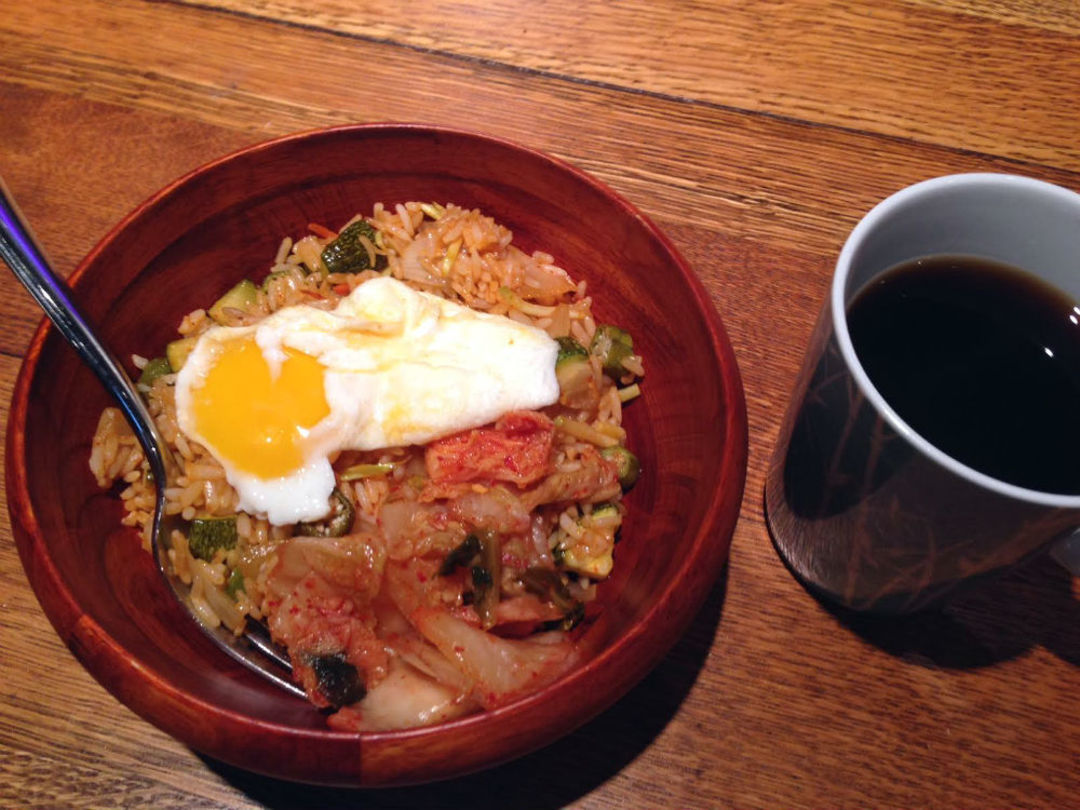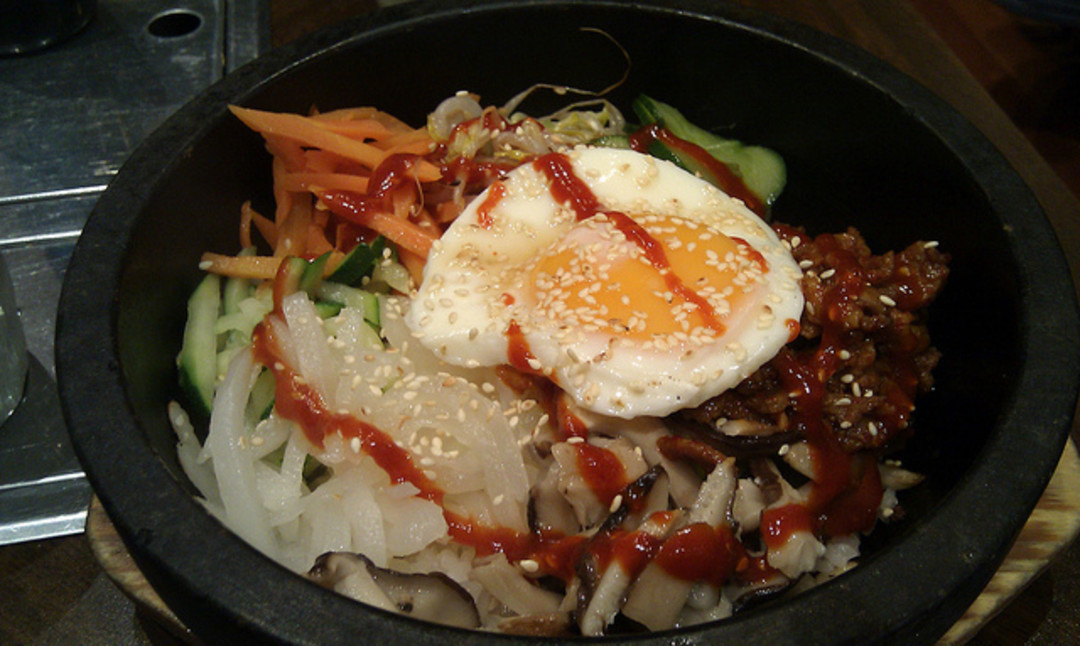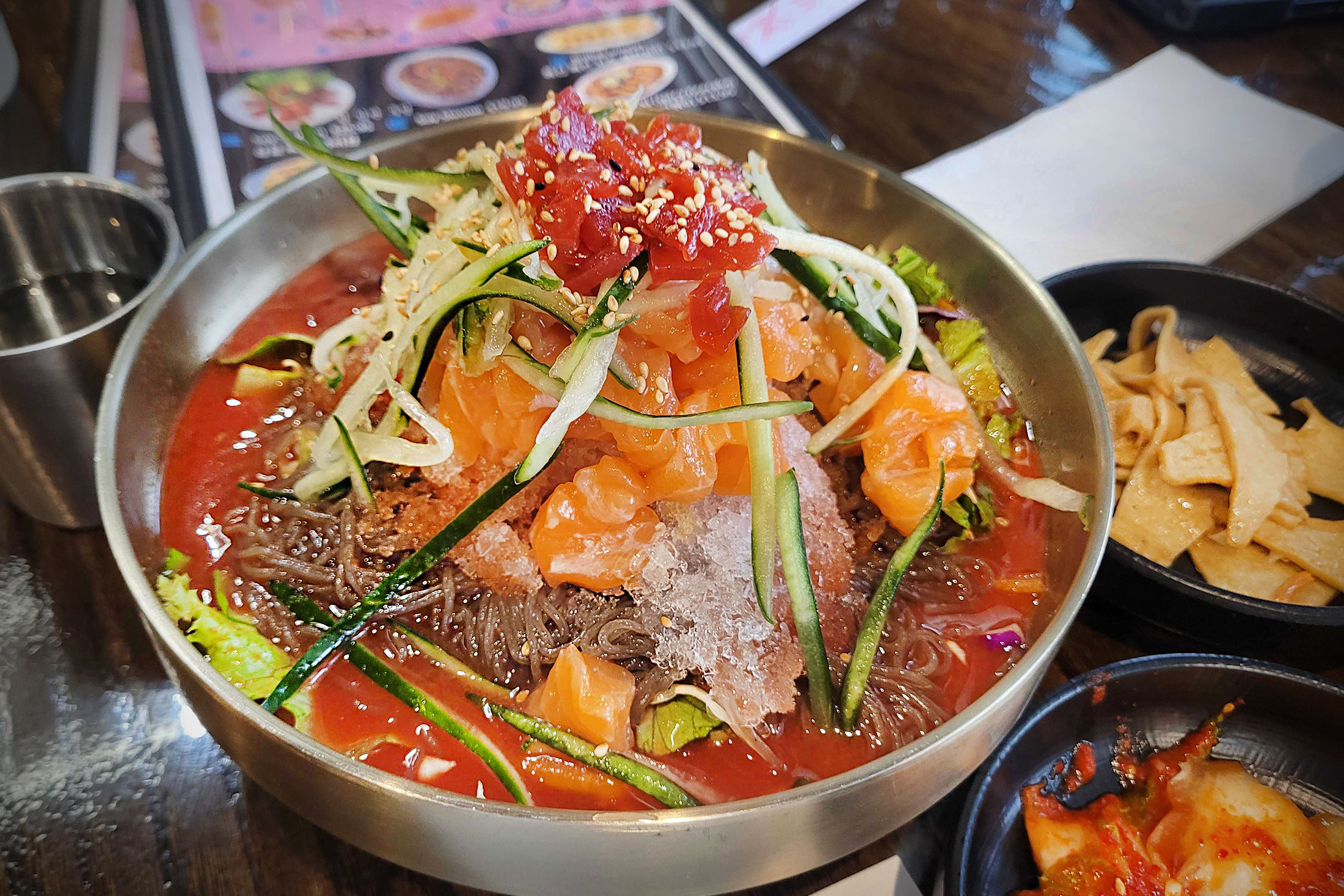Recipe: Jury-Rigged Bibimbap at Home

Not the prettiest picture, but it was still early and the bibimbap was just waking up.
Image: Katharine Shilcutt
A few weeks ago, I posted a photo to Instagram one morning with the caption: "They told me I could do anything, so I made bibimbap for breakfast." The photo in question was a haphazardly thrown-together dish that I frequently make for breakfast, lunch, dinner, or any time in between—basically whenever I'm craving something that's hot, spicy, and packs a bunch of different textures into one bowl.
Since then, my friends have been asking for my "recipe" for at-home bibimbap, the Korean classic that literally means "mixed rice" and can be served hot or cold. The frequently encountered version called dolsot bibimbap is traditionally served in a sizzling stone bowl at your favorite Korean restaurant or Super H Mart food court stall; the scorching hot bowl crisps the rice to a pleasing texture that's crunchy outside, soft inside and cooks the raw egg that's thrown on top before serving. This is the version I like to make at home.
My recipes typically run fast and loose, but that's the great thing about bibimbap (pronounced "bee-bim-bop"): it can take nearly any ingredient you throw at it as long as you start with a few basics. I don't own any stone bowls, nor any bowls that I would heat to sizzling hot temperatures, so here's how I jury-rig my own bibimbap at home using only a sauce pan, a sauté pan, and a few easy ingredients.

See if you can make your at-home bibimbap look as pretty as a restaurant's. | Flickr user avlxyz
Faux Bibimbap on the Go
- Cook some rice. Doesn't have to be fancy. I'll admit to using the jasmine Minute Rice, cooked in its little plastic bag on the stovetop, in well-salted water that I've seasoned with a few good glugs of mirin and rice wine vinegar for additional flavor.
- While the rice is cooking, roughly dice some vegetables. I prefer a base of onion and zucchini, but I also like to throw in whatever vegetables are in my crisper (okra and mushrooms are two favorites). Think of bibimbap as the Korean version of a refrigerator frittata. Gently sauté the vegetables in coconut oil (or whatever oil you have on hand that's not olive oil—it'll taste weird here) over medium heat.
- When the rice is finished, drain it and add to your sauté pan with the veggies. Depending on your spice tolerance, add a bit or a lot of the following: gochujang, ssamjang, Sriracha, or even sambal. You're just looking for the nice red hue that chili sauce will impart to the rice, as well as a nice burst of heat. Turn the pan up to medium-high and let the rice soak up the chili sauce while it crisps up.
- When the rice is crispy enough, remove from heat and put into a bowl. While it cools, quick-fry an egg in the same pan—preferably sunny-side up so you've got plenty of runny yolk inside.
- Garnish your bowl of faux bibimbap with the fried egg, kimchi, bean sprouts, cucumbers, and radishes (or any other crunchy raw vegetable you've got—I prefer the bags of undressed broccoli-carrot slaw at the grocery store, which you can toss into just about anything for added crunch and nutrients), and dig in!
I like to make a big batch of this ahead of time—sans the egg, of course—then warm up portions in your skillet, fry an egg to go on top, et voila: a healthy meal in no time flat.




